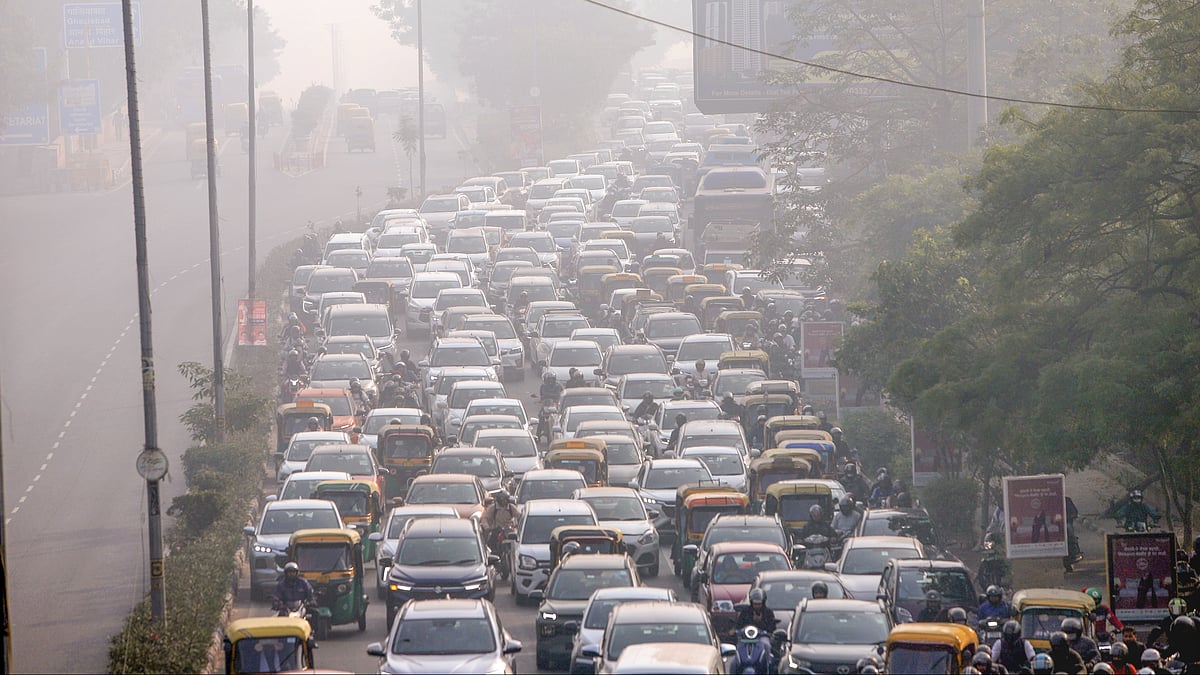Nation
Delhi-NCR’s AQI remains in ‘very poor’ range, six stations cross 400 mark
Across the city, the numbers told a grim story: Alipur 386, Ashok Vihar 392, ITO 394, Mundka 396, and Nehru Nagar 389

Delhi-NCR awoke on Monday wrapped in a choking veil of smog, its skyline dissolved into a ghostly grey as the Air Quality Index sank once more into the depths of the ‘very poor’ and ‘severe’ zones.
By 6 am, the capital’s average AQI stood at a worrisome 360 — yet several pockets of the city slipped far beyond that threshold, with six stations breaching the 400 mark, signalling air so toxic it poses immediate health risks.
Across the city, the numbers painted a grim mosaic: Alipur at 386, Ashok Vihar at 392, ITO at 394, Mundka at 396, and Nehru Nagar at 389. In some corners, the air grew even more poisonous. Bawana recorded an alarming 427, while Rohini, Wazirpur, Narela, Jahangirpuri, and DTU hovered just behind, all trapped firmly in the ‘severe’ category.
Published: undefined
As the haze thickened, all eyes turned to the Supreme Court, which is set to resume hearing a public interest plea on Delhi’s spiralling pollution crisis. With stubble burning in the northern plains merging with stagnant weather patterns to form this toxic cocktail, the court’s intervention has taken on renewed urgency.
A Bench led by Chief Justice of India B.R. Gavai, along with Justices K. Vinod Chandran and N.V. Anjaria, will review the matter once again on 17 November. Their previous hearing on 12 November was marked by frustration — and alarm — over the unabated deterioration of air quality despite the enforcement of the Graded Response Action Plan.
The Bench had sought detailed affidavits from Punjab and Haryana on measures taken to curb stubble burning, after being informed that AQI levels had breached 450 at multiple locations. Senior advocate Gopal Sankaranarayanan pointed out that even routine construction activity — including drilling work right outside the Supreme Court itself — continued unchecked, despite the hazardous air. “At least for a few days, such activities should stop,” he urged.
Amicus curiae Aparajita Singh raised further red flags, warning of discrepancies in official data and describing the situation as “very dangerous.” The court, which has been monitoring the crisis closely, has already demanded a report from the Commission for Air Quality Management on enforcement lapses, and even asked the Centre to consider stringent penalties — including arrests — to deter stubble burning.
In a stark reminder of the health emergency gripping the capital, Justice P.S. Narasimha recently urged lawyers to avoid physical appearances in court and switch to virtual hearings instead, cautioning that Delhi’s toxic air could inflict “permanent damage.”
As the capital gasps beneath a pall of pollution, the nation waits — for cleaner skies, for firmer action, and for the winds of relief that seem nowhere in sight.
With IANS inputs
Published: undefined